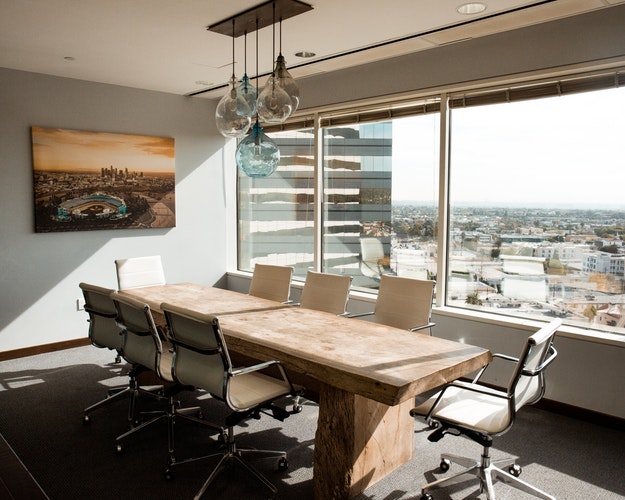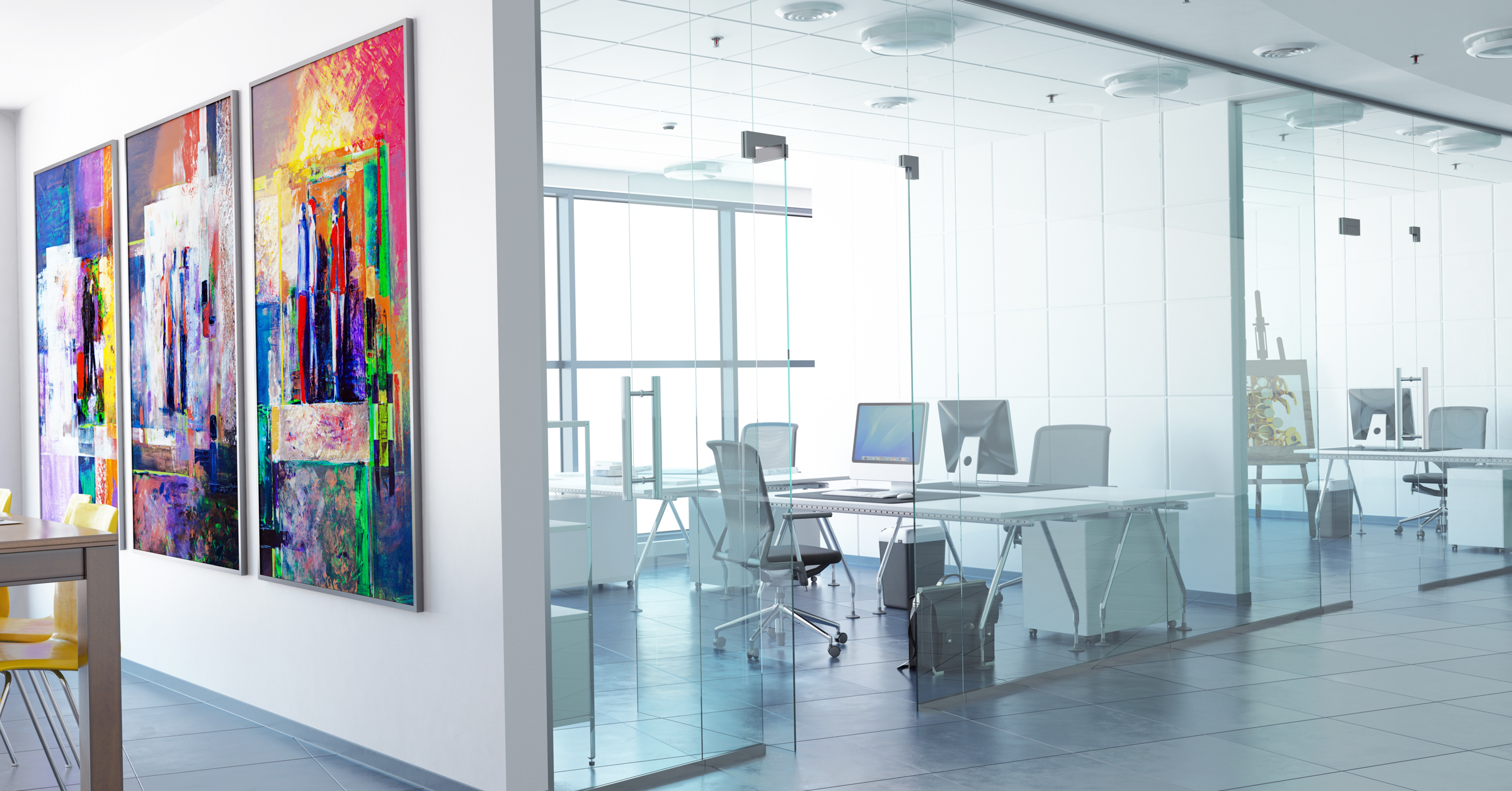
What do you think of when you hear the word meeting? Do you picture a beige boardroom, a lengthy rectangular table, and a gathering of men and women in suits?
If this is what you imagine, you can’t have heard of a huddle room. It’s a concept that’s turning the traditional notion of meetings on its head, with some impressive results.
In this article, we’ll look in more detail at the ways in which classic meetings are broken. Plus, we’ll reveal what is a huddle room and how you can harness the huddle room and all its related technology to fix the meeting culture in your own company.

In 2017 The Massachusetts Institute of Technology carried out research into the state of meetings in modern workplaces. It discovered that the average executive spends 23 hours a week in scheduled meetings.
"What’s wrong with that?" you might ask. If these executives are making decisions and coming away with action points as a result of their meetings, there’s no problem, right?
Unfortunately, reams of research into the effectiveness of company meetings have shown that they’re often not productive in any way.
For example:
In late 2018, a poll of more than 2,000 employees across Europe was carried out. It revealed that workers believed that 56 per cent of the meetings they attended were unproductive.

Meanwhile:
Early in 2019 the online scheduling service Doodle analysed the effectiveness of 19 million meetings by interviewing participants across the world.
It concluded that unproductive meetings were costing the UK economy almost £45 billion a year.
Need more evidence?
A 2014 study by Harvard Business Review shows just how much of an impact a single seemingly-innocuous meeting can have on a company. The study analysed the time commitments linked to a single, hour-long, Executive Communications Meeting, held once a week at a certain company.
HBR concluded that this single meeting, in which attendees merely offered updates on their sectors of the business, was taking up 300,000 person hours a year.

The concept of the huddle has been borrowed from the world of sport. You’ll have seen huddles take place on all sorts of pitches, from the rugby field to the cricket pitch. They involve team players gathering together in a tight circle to strategize on their next moves.
In American football, huddles are headed up by the quarterback. One of the most famous quarterbacks of all time, Tom Brady, once said the following about the power of the huddle in sport:
“You get in the huddle and you call those plays, you have 10 other guys feeling your energy.
“And what are you putting off? Are you putting off confidence? Are you putting off fear? You know they can feel that.
“And when they get in the huddle with me, I want to look in their eyes, and I want them to feel a belief that we’re gonna do it.”
https://giphy.com/gifs/wnba-basketball-wnba-finals-l2SqdymI1A5SSUhUc
So:
What has this all got to do with the corporate environment?
In business, huddles are short, informal, peer-to-peer catch-ups that take place first thing in the morning and last between 10 and 25 minutes.
They’re led by a ‘host’ who is in charge of deciding who speaks and who responds. Think of it as that person being in control of the microphone and ensuring that everyone in the huddle has their chance to speak.
Huddles can be used to:
Just as in sport, huddles are acutely focussed, and they should end in every person present coming away with an action to carry out.
In an ideal world:
Huddles should take place in dedicated huddle rooms that are set up to enable those involved to make the most of their huddle.
Setting up a huddle room is simple. As a best practice, any huddle room design should include all of the following…

The entire point of huddles is that they’re quick. That’s why an interactive display is essential in a huddle room.
Interactive displays allow any employee involved in the huddle to access and display company documents such as charts, spreadsheets and presentations and manipulate them using touch screen technology in order to get points across to colleagues quickly.
They can also be used to give remote workers easy access to huddles and to allow them to participate through high tech video collaboration.
The best interactive displays allow users to manipulate the information on the screen with everything from a pen to the palm of their hand.
Plus:
Interactive displays make referencing data or documents easy thanks to edge-swipe functionality and multiple digital connectivity options.
Neuroscientists at Michigan State University believe that spending too much time in dim rooms can affect people’s memory and ability to learn.
Hence:
Huddle rooms need to feature as much natural light as possible.
When people sit down at meetings, it’s easier for them to relax and therefore simpler for them to zone out of what’s being said. When people are on their feet they are psychologically primed for action and will be more responsive and proactive.
Also:
Standing up takes away the opportunity for people to rest items like phones or tablets on the table in front of them, so there’s less chance of them being distracted.

You want your huddle room to be a place of inspiration and action. So, the last thing you want to do is have a plaque on the door that says Room A-5.
You can name your rooms something that hints at its purpose.
For example:
The War Room, The Locker Room or The Batcave.
Alternatively:
Pick a name for your room that reflects your brand and location.
Facebook has turned the naming of its rooms into a team bonding exercise, in which staff are responsible for devising the names.

As mentioned above, unproductive meetings can cost businesses thousands, if not millions, of pounds a year. The way in which hurdles are set up discourages people from going off on tangents or procrastinating, saving companies both time and money.
A morning huddle gets everyone on their feet, focused, and armed with action plans for the day. Some companies have been known to end their huddles with a chant or by singing the company song.
Statistics suggest that the average office worker receives up to 120 emails every day. When your teammates and staff are being swamped with mail, how do you know that your own email, updating them on an important project, hasn’t been missed in the deluge?
Huddles are how:
In the huddle room, you can give your team your latest updates instantly and see their reaction in real-time.
Also:
If anyone has any questions, you can answer them instantly, reducing the likelihood of any misunderstandings arising.
Hosting a daily huddle reminds workers that they’re part of a team – that they’re part of a ‘we’ not just an ‘I’.
Some businesses like to end their daily session in the huddle room with a pat on the back for a particular team member or by reading out a bit of positive feedback from a customer.
Problems can be fixed faster when businesses have regular huddles. Instead of wasting time setting up one-off meetings to address specific issues, company members know they can just take their issue to the huddle room and get them dealt with there.
If the issue is too complicated to address in a short huddle, tackling the problem becomes an instant action point to be taken away from the huddle room process.
Hosting daily huddles is a sign that a company is forward thinking. This outlook should appeal to the next generation of talent.

Unlike in American football, business huddles don’t need to be headed up by the same person every morning. The boss or team manager doesn’t have to hold the reins every time.
In fact:
Mixing up the person in charge every day is a great way to encourage the quieter, less confident, members of your workforce to step up, use their voice, and hone their leadership skills. It lays the groundwork for better business collaboration amongst colleagues.
Keep up to date with all the latest from Avocor and partners and get information on upcoming events and exciting product news.

Speak to one of our product specialists and find the perfect solution for you.